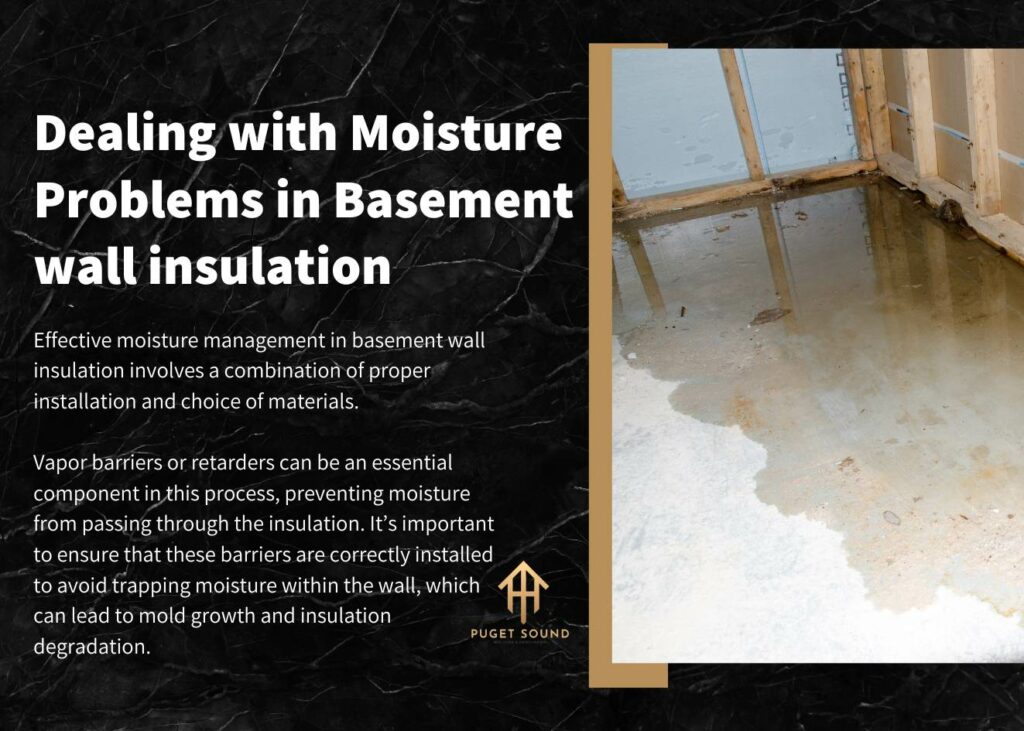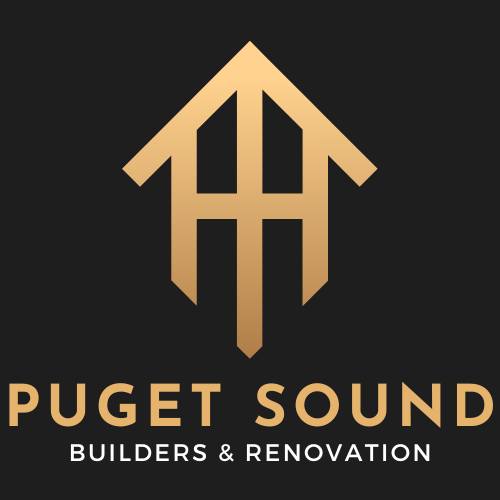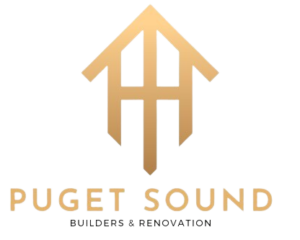Insulation in homes plays a pivotal role in maintaining a comfortable and energy-efficient environment, and this is particularly true for basement wall insulation. Basements are critical areas where heat loss can occur and moisture can accumulate, impacting the overall comfort and energy efficiency of a home. Insulating basement walls is not just a measure for energy conservation but also a step towards creating a more comfortable living space.
The Effect of Basement Insulation on Home Comfort:
- Temperature Regulation – One of the primary effects of basement insulation is the regulation of temperature within the home. Basements without proper insulation can become cold and damp, leading to an overall drop in the temperature of the house. Insulating the basement walls helps in maintaining a consistent temperature, reducing the strain on heating systems during colder months. This uniform temperature contributes to a more comfortable living environment throughout the home.
- Moisture Control – Another significant aspect of basement insulation is moisture control. Basements are prone to dampness due to their below-ground location. This moisture can lead to mold growth, which not only damages the house but can also cause health issues. Insulating basement walls with moisture-resistant materials can prevent this dampness, thereby improving the air quality and comfort of the home.

The Benefits of Insulating Basement Walls
Insulating basement walls extends beyond just improving home comfort. It brings several benefits that contribute to the overall well-being of the occupants and the longevity of the building.
- Energy Efficiency – Insulation reduces the amount of heat escaping through the basement, thereby lowering heating costs in winter and cooling costs in summer.
- Increased Property Value – Homes with well-insulated basements often have higher market values due to their improved efficiency and comfort.
- Noise Reduction – Insulation acts as a sound barrier, reducing external noise and creating a quieter indoor environment.
- Mold Prevention – By controlling moisture, insulation helps prevent mold growth, which is beneficial for both the house’s structure and the occupants’ health.
- Structural Protection – Insulation protects against the potential damage caused by freezing and thawing cycles, thus preserving the structural integrity of the building.
- Environmental Impact – By reducing energy consumption, basement wall insulation contributes to a smaller carbon footprint, keeping in mind environmental sustainability goals.
Dealing with Moisture Problems in Basement wall insulation
Basements are inherently susceptible to moisture problems due to their proximity to the ground. This moisture can seep through walls and floors, leading to damp conditions that compromise the effectiveness of insulation for basement walls. To address this, it’s crucial to understand the sources of moisture, which can include external sources like rainwater or internal sources such as plumbing leaks. Proper drainage and waterproofing are essential first steps in managing moisture. Additionally, selecting the right type of insulation that can withstand these conditions is key. Insulation materials like closed-cell spray foam or rigid foam boards are often recommended as they provide a barrier to moisture while insulating the space.
Effective moisture management in basement wall insulation involves a combination of proper installation and choice of materials. Vapor barriers or retarders can be an essential component in this process, preventing moisture from passing through the insulation. It’s important to ensure that these barriers are correctly installed to avoid trapping moisture within the wall, which can lead to mold growth and insulation degradation. Adequate ventilation is also crucial, as it helps in regulating humidity levels and preventing condensation. Regular inspections and maintenance can identify and resolve any moisture issues early, ensuring the longevity and effectiveness of the insulation.

Economical Solutions for Insulating Basement Walls
Economical insulation solutions for basement walls are particularly suitable for homeowners looking to improve energy efficiency and comfort without incurring significant expenses.
- Fiberglass Batts – This is a common and affordable insulation material that can be easily installed in basement walls. It’s effective in providing thermal resistance, though it must be kept dry to maintain its insulating properties.
- Rigid Foam Boards – These boards offer excellent insulation per inch of thickness and can be a more affordable option compared to spray foam. They are also resistant to moisture, making them suitable for basement environments.
- Cellulose Insulation – Made from recycled paper products, cellulose is an eco-friendly and cost-effective option. It can be installed in wall cavities and is known for its good thermal performance.
- Reflective Insulation – This involves the use of reflective materials like foil-faced kraft paper, which can help in reducing heat flow. It’s a more affordable option and is relatively easy to install.
- DIY Spray Foam Kits – For smaller basements or targeted insulation projects, DIY spray foam kits can be a budget-friendly solution. They allow for precise application and are effective in sealing gaps and cracks.
- Blanket Insulation – This includes rolls and batts of mineral wool or fiberglass, which are easy to install and are among the most cost-effective solutions for insulating unfinished basement walls.
Materials Review: The Best Types of Insulation for basement walls
Closed-Cell Spray Foam Insulation
Closed-cell spray foam is highly regarded for its exceptional moisture resistance and air-sealing capabilities. It’s a dense, rigid foam that adds structural strength to the walls. Ideal for basements in humid or flood-prone areas, it effectively blocks moisture ingress. This type of insulation is also great for creating a tight thermal envelope, significantly reducing energy loss. However, it’s one of the more expensive options and typically requires professional installation.
Rigid Foam Board Insulation
Rigid foam boards, such as extruded polystyrene (XPS) or expanded polystyrene (EPS), provide excellent thermal resistance and are relatively easy to install. They are ideal for DIY projects and work well in most basement environments. These boards can be cut to fit and are often used to insulate basement walls before finishing. They are less expensive than spray foam and offer good moisture resistance, though not as high as closed-cell spray foam.
Fiberglass Batts
Fiberglass batts are a cost-effective and widely available insulation material. Best suited for dry basements, they offer good thermal resistance and are easy to install, making them a popular choice for DIY projects. However, fiberglass is susceptible to moisture damage and can lose effectiveness if not properly protected from water vapor, so it’s essential to use a vapor barrier in moisture-prone areas.
Mineral Wool Insulation
Mineral wool (rock or slag wool) is known for its fire resistance and soundproofing abilities. It’s denser than fiberglass and more resistant to moisture, though not entirely waterproof. This type of insulation is suitable for basements needing extra fire protection and noise reduction. Like fiberglass, it comes in batts or rolls and can be easily installed.
Cellulose Insulation
Cellulose, made from recycled paper products, is an eco-friendly option. It’s often used in basement wall cavities and is known for its excellent thermal and sound insulation properties. While it’s treated for fire resistance, it’s not the best choice for high-moisture areas unless adequately protected from moisture.
This may interest you | Seattle Basement remodel >>
Insulation Techniques for Optimal Climate Control in the Basement
Applying the right insulation techniques is crucial for achieving optimal climate control in basements.
- Vapor Barriers – Installing a vapor barrier on the warm side of the insulation helps prevent moisture from penetrating and compromising the insulation’s effectiveness, especially important in humid climates.
- Air Sealing – Before insulating, it’s crucial to seal all gaps and cracks to prevent air leaks. This step is vital for maintaining consistent temperatures and improving energy efficiency.
- Thermal Bridging Prevention – Insulating around joists and edges to prevent thermal bridging, where heat bypasses the insulation through more conductive materials, helps maintain an even temperature.
- Layering Insulation – In colder climates, layering different types of insulation, such as combining rigid foam boards with fiberglass batts, can provide enhanced thermal protection.
- Proper Installation Techniques – Ensuring that insulation materials are properly installed, without gaps or compression, maximizes their insulative properties and the overall efficiency of the system.
- Drainage Plane Installation – Especially in areas prone to groundwater seepage, installing a drainage plane behind the insulation helps to keep the basement dry.
- Insulating Basement Floors – In addition to walls, insulating basement floors can significantly improve comfort and energy efficiency, especially in colder climates.
Solving Common Problems in Basement wall insulation
Ensuring effective basement wall insulation involves not just the right choice of materials and techniques, but also tackling common problems that can arise. Addressing these issues promptly can enhance insulation performance, increase energy efficiency, and prevent long-term damage. Common Problems and Their Solutions:
- Moisture Accumulation:
Problem – Moisture can seep into basement walls, leading to mold growth and reduced insulation effectiveness.
Solution – Use moisture-resistant insulation materials like closed-cell spray foam or rigid foam boards. Installing a proper vapor barrier and ensuring good drainage around the foundation can also mitigate this issue.
- Air Leaks:
Problem – Unsealed gaps and cracks in basement walls can lead to air leaks, reducing the insulation’s effectiveness.
Solution – Before insulating, conduct a thorough inspection and seal all potential air leaks using caulk, spray foam, or weatherstripping. This not only improves insulation performance but also enhances overall energy efficiency.
- Thermal Bridging:
Problem – Thermal bridging occurs when heat bypasses the insulation through more conductive materials like concrete or metal studs, leading to energy loss.
Solution – Install continuous insulation across the entire basement wall, covering potential thermal bridges. Materials like rigid foam boards are effective in preventing thermal bridging.
- Inadequate Insulation Thickness:
Problem – Insufficient insulation thickness can fail to provide the desired thermal resistance, especially in extreme climates.
Solution – Ensure that the insulation thickness meets or exceeds the recommended R-value for your geographical area. In some cases, combining multiple types of insulation, such as rigid foam boards with fiberglass batts, can provide the necessary thickness and effectiveness.
In summary, effectively addressing common insulation problems in basement walls, such as moisture accumulation, air leaks, thermal bridging, and inadequate insulation thickness, is crucial for maintaining a comfortable and energy-efficient home. If you’re facing challenges with your basement insulation or looking for expert guidance, consider reaching out to Puget Sound, a professional company known for their expertise in insulation solutions. Tailored advice and services to ensure your basement is well-insulated, protecting your home against energy loss and moisture-related issues.
Contact us for a personalized consultation.





